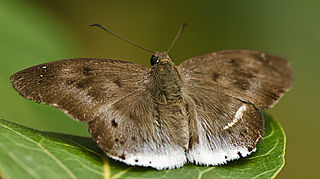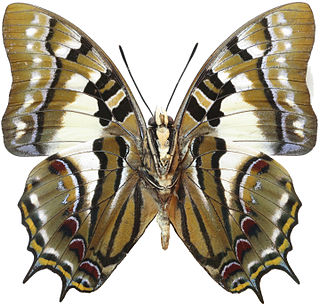
Hamsters are rodents belonging to the subfamily Cricetinae, which contains 19 species classified in seven genera. They have become established as popular small pets. The best-known species of hamster is the golden or Syrian hamster, which is the type most commonly kept as a pet. Other hamster species commonly kept as pets are the three species of dwarf hamster, Campbell's dwarf hamster, the winter white dwarf hamster and the Roborovski hamster.

Penguins are a group of aquatic flightless birds from the order Sphenisciformes of the family Spheniscidae. They live almost exclusively in the Southern Hemisphere: only one species, the Galápagos penguin, is found north of the Equator. Highly adapted for life in the ocean water, penguins have countershaded dark and white plumage and flippers for swimming. Most penguins feed on krill, fish, squid and other forms of sea life which they catch with their bills and swallow whole while swimming. A penguin has a spiny tongue and powerful jaws to grip slippery prey.

Squirrels are members of the family Sciuridae, a family that includes small or medium-size rodents. The squirrel family includes tree squirrels, ground squirrels, and flying squirrels. Squirrels are indigenous to the Americas, Eurasia, and Africa, and were introduced by humans to Australia. The earliest known fossilized squirrels date from the Eocene epoch, and among other living rodent families, the squirrels are most closely related to the mountain beaver and to the dormice.
Genus is a taxonomic rank used in the biological classification of living and fossil organisms as well as viruses. In the hierarchy of biological classification, genus comes above species and below family. In binomial nomenclature, the genus name forms the first part of the binomial species name for each species within the genus.

Extinction is the termination of a taxon by the death of its last member. A taxon may become functionally extinct before the death of its last member if it loses the capacity to reproduce and recover. Because a species' potential range may be very large, determining this moment is difficult, and is usually done retrospectively. This difficulty leads to phenomena such as Lazarus taxa, where a species presumed extinct abruptly "reappears" after a period of apparent absence.

The International Union for Conservation of Nature (IUCN) Red List of Threatened Species, also known as the IUCN Red List or Red Data Book, founded in 1964, is an inventory of the global conservation status and extinction risk of biological species. A series of Regional Red Lists, which assess the risk of extinction to species within a political management unit, are also produced by countries and organizations.

Endemism is the state of a species only being found in a single defined geographic location, such as an island, state, nation, country or other defined zone; organisms that are indigenous to a place are not endemic to it if they are also found elsewhere. For example, the Cape sugarbird is found exclusively in southwestern South Africa and is therefore said to be endemic to that particular part of the world. An endemic species can also be referred to as an endemism or, in scientific literature, as an endemite.

The conservation status of a group of organisms indicates whether the group still exists and how likely the group is to become extinct in the near future. Many factors are taken into account when assessing conservation status: not simply the number of individuals remaining, but the overall increase or decrease in the population over time, breeding success rates, and known threats. Various systems of conservation status are in use at international, multi-country, national and local levels, as well as for consumer use such as sustainable seafood advisory lists and certification. The two international systems are by the International Union for Conservation of Nature (IUCN) and The Convention on International Trade in Endangered Species of Wild Fauna and Flora (CITES).

Tagiades japetus, commonly known as the pied flat or the common snow flat, is a species of spread-winged skipper butterfly belonging to the family Hesperiidae. It is widely distributed, being found from India, the Himalayas, Southeast Asia, to Australia. It contains several recognized subspecies.

Conus marmoreus, common name the "marbled cone", is a species of predatory sea snail, a marine gastropod mollusk in the family Conidae, the cone snails, cone shells or cones. It is the type species for the genus Conus. This is a species which is believed to feed mostly on marine molluscs including other cone snails. This snail is venomous, like all cone snails.

Ecsenius is a large genus of fish in the family Blenniidae. Several species, including Ecsenius midas, the Midas blenny, and Ecsenius bicolor, the bicolor blenny, are commonly sold at aquarium stores as pets.
A species (pl. species) in biology is often defined as the largest group of organisms in which any two individuals of the appropriate sexes or mating types can produce fertile offspring, typically by sexual reproduction. It is the basic unit of classification and a taxonomic rank of an organism, as well as a unit of biodiversity. Other ways of defining species include their karyotype, DNA sequence, morphology, behaviour, or ecological niche. In addition, paleontologists use the concept of the chronospecies since fossil reproduction cannot be examined.
Yuga Purusha is an Indian 1989 Kannada-language film directed by D. Rajendra Babu. The film stars Ravichandran and Khushbu. It is a remake of Bollywood movie Karz. The music for the film was composed by Hamsalekha. The movie is about reincarnation, where a man is murdered by his newly wedded wife in his past life for the sake of acquiring the man's property. After taking a new birth, the man takes revenge against his past life's wife. Like other Ravichandran movies released during the late 80s period, this was also the musical blockbuster of the year.

Conus bandanus, common name the banded marble cone, is a species of sea snail, a marine gastropod mollusk in the family Conidae, the cone snails and their allies.
Ecsenius bandanus, known commonly as the Banda comb-tooth, Banda clown blenny, or the Banda combtooth-blenny, is a species of combtooth blenny found in coral reefs in the western Pacific ocean.
Ecsenius caeruliventris, known commonly as the bluebelly blenny in Indonesia, is a species of combtooth blenny in the genus Ecsenius. It is a tropical blenny found in the western Pacific ocean, specifically in Sulawesi, Indonesia. Male Ecsenius caeruliventris can reach a maximum length of 2.4 centimetres, while females can reach a maximum length of 2.37 centimetres; it is one of the smallest blennies in Ecsenius. The species name means "sky-blue belly" from the Latin words caeruleus and ventris, referring to the blue abdomen on the species; the common name is derived from this. The species is most similar to its sister taxon E. shirleyae and E. bandanus.

Benthopectinidae is a family of sea stars containing at least 75 species in eight genera. It is the only family in the monotypic order Notomyotida.
Olavina Aasare is a 1988 Indian Kannada-language film directed and produced by K. V. Jayaram. The film stars Vishnuvardhan, Rupini and Sudha Chandran. The music was composed by M. Ranga Rao and the dialogues and lyrics were written by Kunigal Vasanth and Doddarangegowda.

Conus vidua, common name the vidua cone, is a species of sea snail, a marine gastropod mollusk in the family Conidae, the cone snails, cone shells or cones.

Charaxes (Polyura) pyrrhus is a butterfly in the family Nymphalidae. It was described by Carl Linnaeus in his 1758 10th edition of Systema Naturae. It is found in the Australasian realm including New Guinea, Australia, Timor, Moluccas.














